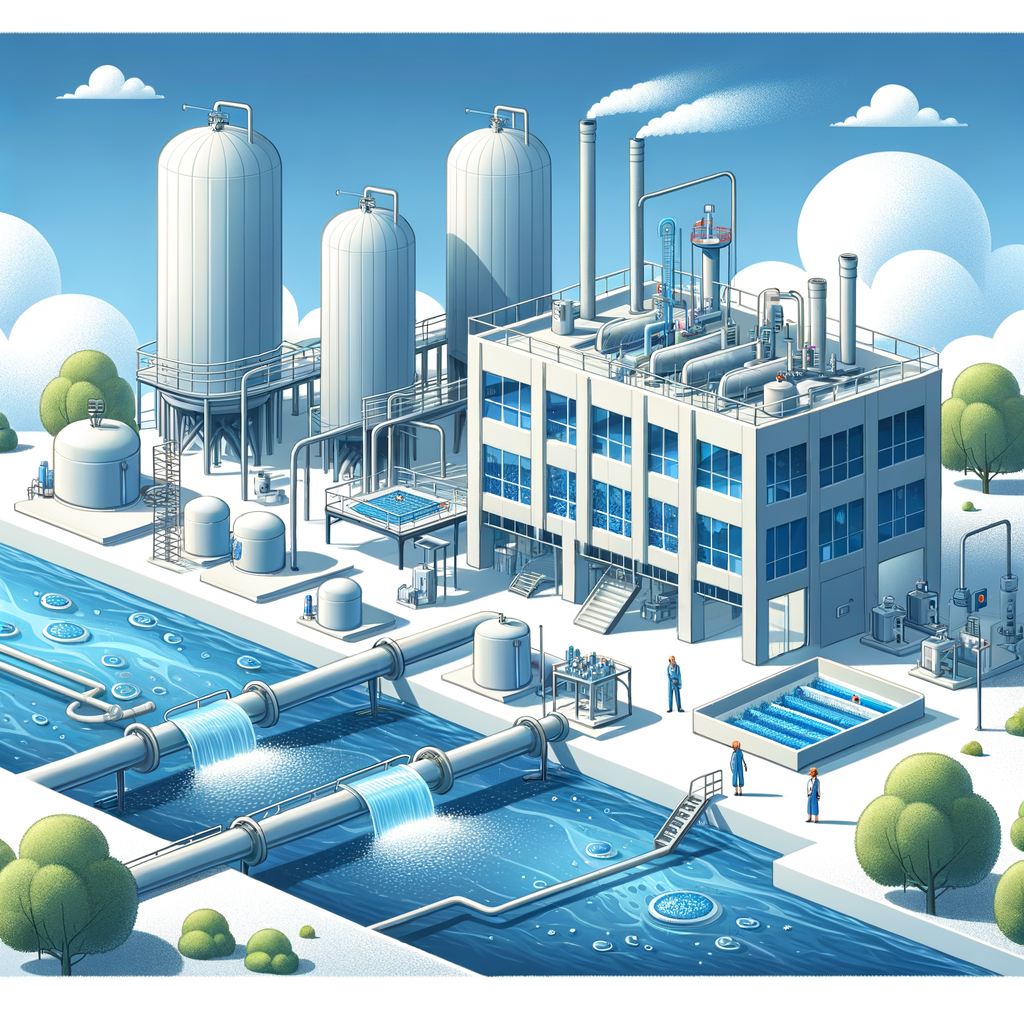From rigid, manual systems to intelligent, self-learning water treatment—the future of clean water is here.
Water scarcity affects nearly 40% of the global population, and that number is growing. Climate change, pollution, and surging demand are pushing our water systems to their breaking points. Yet most water treatment facilities still operate like they did decades ago—with rigid, manual processes that can’t adapt to our rapidly changing world.
But what if water treatment systems could learn, adapt, and optimize themselves in real-time? What if they could predict problems before they happen and automatically adjust to maintain perfect water quality while using minimal energy?
This isn’t science fiction. It’s the reality emerging from cutting-edge research on artificial intelligence in water treatment.
The Problem with Old-School Water Treatment
Traditional water treatment systems are remarkably inflexible. When water quality suddenly changes due to a storm or pollution event, human operators must manually adjust chemical dosing, filtration rates, and other parameters. This reactive approach often leads to inefficiencies, higher costs, and missed opportunities to recover valuable resources from wastewater.
“Most water treatment systems still rely on rigid, manual processes that are ill-suited for today’s complex challenges,” explains a new study from Nanjing University published in Frontiers of Environmental Science & Engineering. “These outdated methods fall short when sudden shifts in water quality or unexpected weather events occur.”
Enter the Age of Intelligent Water
The research presents a revolutionary three-part roadmap for transforming water treatment with AI:
Smart Materials and Technology
AI is accelerating the design of next-generation water treatment materials. We’re talking about programmable nano-materials that can target specific pollutants, advanced membranes that adapt their properties in real-time, and microbial communities engineered to break down contamination more efficiently.
Think of it as giving water treatment facilities a complete biological and technological makeover—one designed by artificial intelligence to be more effective, efficient, and adaptable than anything we’ve created before.
Intelligent Engineering and Control
This is where things get really exciting. AI systems create “digital twins”—virtual replicas of water treatment plants that can simulate thousands of scenarios in seconds. These systems use reinforcement learning algorithms and predictive analytics to optimize every aspect of treatment in real-time.
The results are impressive: smart aeration systems guided by AI can slash energy use by over 30% while maintaining or even improving water quality standards. That’s not just good for the environment—it’s transformative for operating costs.
Service-Driven Industry Revolution
Perhaps most revolutionary is the emergence of “Water Treatment as a Service” models. Instead of utilities owning and operating treatment equipment, they’re starting to pay based on performance metrics—like pollutant removal efficiency or water reuse volumes.
This shift creates incentives for continuous improvement and innovation. When payment is tied to results rather than equipment, everyone benefits from more efficient, effective treatment.
Real-World Impact You Can See
The applications are already appearing worldwide:
Urban Water Networks: AI systems optimize water distribution in real-time, reducing waste and ensuring consistent quality throughout the city.
Industrial Treatment: Factories use AI-powered systems for precision treatment that achieves zero-discharge standards while recovering valuable materials from wastewater.
Emergency Response: When natural disasters threaten water quality, AI systems can automatically adjust treatment processes to maintain safety standards.
A Self-Learning Future
What makes this technology truly revolutionary is its ability to learn and improve continuously. These aren’t static systems following pre-programmed rules—they’re intelligent networks that get better at their jobs over time.
As Prof. Hui Huang, the study’s corresponding author, puts it: “AI is more than a tool—it’s a strategic partner in reimagining the entire water treatment ecosystem. By embedding AI into every stage—from material selection to process optimization—we can transform reactive systems into predictive, self-adapting infrastructures.”
The Bigger Picture
This transformation comes at a critical time. Climate change is making weather patterns more unpredictable, urban populations are growing, and water quality challenges are becoming more complex. Traditional approaches simply can’t keep up.
But AI-powered water treatment offers hope. These systems can handle complexity, adapt to change, and optimize for multiple goals simultaneously—clean water, energy efficiency, resource recovery, and cost-effectiveness.
The research envisions a near future where intelligent water treatment systems become the norm, seamlessly coordinating operations, reducing environmental footprints, and ensuring reliable access to clean water even under extreme conditions.
Water Security for All
As we face an uncertain climate future, ensuring access to clean, safe water becomes increasingly critical. The integration of artificial intelligence into water treatment isn’t just a technological upgrade—it’s a pathway to water security for communities worldwide.
The blueprint exists. The technology is advancing rapidly. The question now is how quickly we can implement these intelligent systems to protect our most precious resource.
In a world where water scarcity threatens billions, the marriage of artificial intelligence and water treatment offers a beacon of hope—and a practical path forward.

Dayana Figueroa is an environmental engineer with a Master’s in Hydrotechnological and Environmental Project Management, currently working at F-Reg in Nice. She specializes in hydraulic modeling, stormwater management, and sewage network optimization. With a multicultural background from experiences in France, Spain, Colombia, and Germany, Dayana brings diverse expertise to her field. She has a strong background in Life Cycle Assessment (LCA). Dayana is also a cofounder of the Greenminds association, combining her professional skills and LCA knowledge with initiatives to promote environmental sustainability.

Leave a Reply